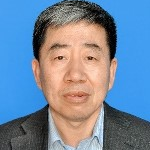Advanced Powder Metallurgy Materials and Technology
A special issue of Materials (ISSN 1996-1944). This special issue belongs to the section "Metals and Alloys".
Deadline for manuscript submissions: closed (20 February 2024) | Viewed by 1284
Special Issue Editors
Interests: powder metallurgy; additive manufacturing; aluminum alloys; metal matrix nanocomposites
Special Issues, Collections and Topics in MDPI journals
2. State Key Laboratory of Rolling and Automation, Northeastern University, Shenyang 110819, China
Interests: powder metallurgy; additive manufacturing; titanium alloys; aluminum alloys; nanostructured and ultrafine grained materials; metal matrix nanocomposites
Special Issue Information
Dear Colleagues,
Powder metallurgy allows for versatile materials design with respect to conventional casting metallurgy, and has been used to fabricate advanced materials including oxide-dispersion-strengthened metallic materials, refractory metals and associated alloys, metal matrix composites/nanocomposites, nanostructured/ultrafine-grained/heterostructured metallic materials, etc. These high-performance powder metallurgy materials are currently being extensively used as structural components/parts or showing great potential in structural applications. With the coming of the emerging additive manufacturing technology, the design and fabrication of very complex-shaped powder metallurgy materials become possible. This significantly advances the development of novel powder metallurgy materials with extremely complex shapes. In addition, to improve the direct sustainability of structural metals, solid-state recycling of metal chips/scraps via powder metallurgy route is receiving increasing attention.
This special issue will mainly cover metallic materials, including metals, alloys, and metal matrix composites, fabricated by either powder metallurgy route or additive manufacturing technology. The topics on solid-state recycling of metals, rapid sintering of metallic powders and other relevant studies are also warmly welcome to contribute to this issue. We cordially invite you to submit full papers, communications and reviews to present and discuss your recent findings on the following areas:
- Powder metallurgy Al alloys
- Powder metallurgy titanium and titanium alloys
- Nanostructured and ultrafine-grained metals and alloys fabricated by powder metallurgy
- Metal matrix nanocomposites fabricated by powder metallurgy
- Heterostructured metals, alloys and composites fabricated by powder metallurgy
- Spark plasma sintering
- Additively manufactured metals and alloys
- Solid-state recycled materials
Dr. Dengshan Zhou
Prof. Dr. Deliang Zhang
Guest Editors
Manuscript Submission Information
Manuscripts should be submitted online at www.mdpi.com by registering and logging in to this website. Once you are registered, click here to go to the submission form. Manuscripts can be submitted until the deadline. All submissions that pass pre-check are peer-reviewed. Accepted papers will be published continuously in the journal (as soon as accepted) and will be listed together on the special issue website. Research articles, review articles as well as short communications are invited. For planned papers, a title and short abstract (about 100 words) can be sent to the Editorial Office for announcement on this website.
Submitted manuscripts should not have been published previously, nor be under consideration for publication elsewhere (except conference proceedings papers). All manuscripts are thoroughly refereed through a single-blind peer-review process. A guide for authors and other relevant information for submission of manuscripts is available on the Instructions for Authors page. Materials is an international peer-reviewed open access semimonthly journal published by MDPI.
Please visit the Instructions for Authors page before submitting a manuscript. The Article Processing Charge (APC) for publication in this open access journal is 2600 CHF (Swiss Francs). Submitted papers should be well formatted and use good English. Authors may use MDPI's English editing service prior to publication or during author revisions.
Keywords
- powder metallurgy
- additive manufacturing
- powder metallurgy technology
- rapid sintering
- powder thermomechanical consolidation
- solid-state recycling







